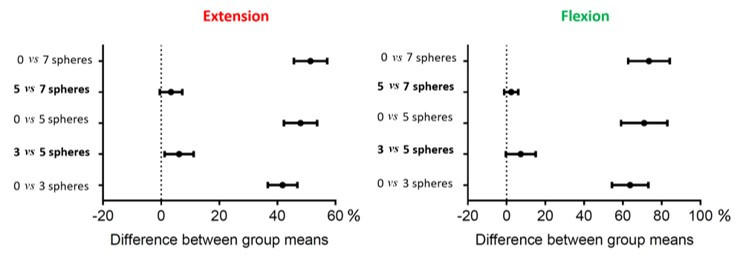Description
Introduction. The presence of loose bodies in the olecranon and coronoid fossae can decrease elbow range of motion (ROM), requiring surgical removal. However, no study has quantified the ROM loss corresponding to a certain volume of loose bodies. The aim of this study was to measure the reduction of elbow extension and flexion after the introduction of a progressively increasing number of simulated loose bodies in the olecranon and in the coronoid fossa.
Methods and Material. Ten fresh-frozen specimens with no evidence of previous trauma, instability, or gross ROM deficit were included in the study. ROM in flexion and extension was measured. A mini-open high-posterolateral approach to the olecranon fossa was performed and a progressively increasing number of 5mm-diameter radiopaque spheres was introduced. Fluoroscopy was used to confirm intra-articular placement and ROM was measured after each group of spheres were introduced. After the removal of the spheres from the olecranon fossa, a mini-open over-the-top approach was performed to the coronoid fossa, and the same process was repeated.
Results. The initial median total range of motion was 155 ° (155° flexion). The introduction of a volume of 0.2 cm3 in the olecranon fossa caused a reduction of 41.79% of the total extension. This percentage increased to 48% with 0.33 cm3 and to 51.40% with 0.46 cm3. The introduction of 0.2 cm3 in the coronoid fossa caused a reduction of 63.79% of the total flexion. This percentage increased to 71.06% with 0.33 cm3 and to 73.49% with 0.46 cm3 (FIG 1).
Conclusions. This study quantifies the relation between the reduction of elbow ROM in extension and flexion and number and volume of loose bodies in the olecranon and coronoid fossae. This information is precious for surgeons approaching the stiff elbow and could be relevant for preoperative counselling helping surgeons and patients develop realistic expectations.




